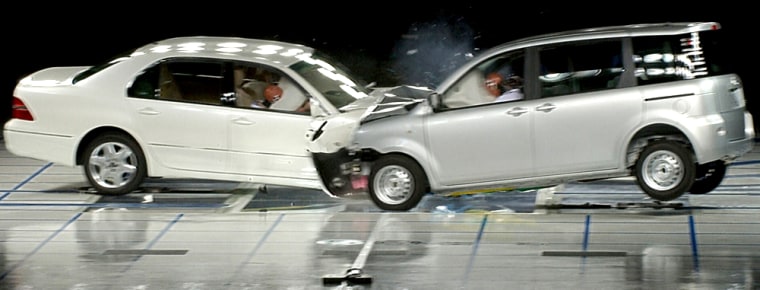Japanese automaker Toyota Motor Corp. is developing softer hoods to break the impact for pedestrians who get hit by cars, while making smarter vehicles that automatically stay in proper lanes and stop ahead of collisions.
Such features are in the works at Toyota's technical center here, west of Tokyo, which includes state-of-the-art crash-test facilities. The center, which opened last year, was shown to reporters Thursday.
The design improvements to the front of the car to break the impact for pedestrians will be included in a model going on sale in Japan in the fall, Toyota officials said while declining to give specifics. Overseas sales plans are undecided.
Although all the world's automakers are developing ways to beef up driver safety, concern for people on the street is growing in Japan, where 43 percent of fatal accidents involve pedestrians and people on bicycles. Fatalities for drivers total 39 percent of the accidents while those on motorcycles make up 18 percent.
"It is Toyota's intention to contribute to the realization of a zero-fatality and zero-accident society," Tetsuo Hattori, a managing officer, told reporters.
Efforts to protect pedestrians are more affordable than the high-tech computerized devices that help drivers stop before collisions happen or steer better on slippery roads, said Tomoyuki Fukatsu, project general manager at Toyota.
Toyota showed a beefed up version of its system to strengthen braking and tightens the safety belt when a radar device senses an object in front of the car. Other automakers offer similar anti-collision systems.
The souped up system, which will be available soon, adds a digital camera to allow the car to recognize what lies ahead better, brake harder and tighten the safety belt more quickly, according to Toyota.
Also shown was an upgrade of the "vehicle stability control" system now available in luxury models in both the United States and Japan that improves handling on icy surfaces through a sophisticated pattern of braking and steering _ all done automatically by the car. A test drive without the system sent the car spinning. When the new system kicked in, it delivered a steady ride.
Another feature in the works uses a camera to monitor lanes on the road, a revamped version of cruise control. When a driver strays off the lane, the steering wheel tugs in the right direction on its own and a beep goes off as a warning, presumably to wake up the driver who may be dozing off.
